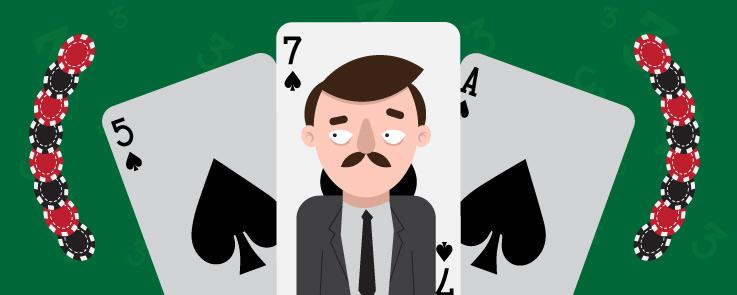3 Card Poker: What Should You Know Before You Play

New games come and new games go in the search for the right combination that will resonate with players and keep them coming back for more.
One that has kept players coming back again and again is Three Card Poker (also 3 Card Poker), invented by Derek Webb of the United Kingdom in 1994. In live casinos, Three Card Poker is the third most-played table game, behind only blackjack and craps. More money is wagered on baccarat because of its popularity among high rollers, but more Americans play Three Card Poker than either baccarat or roulette. Three Card Poker has enjoyed increasing popularity in online casinos and in live casinos inside and outside the U.S.
Here are a few things you should know about Three Card Poker before you play.
THREE CARD POKER IS BASED ON STUD POKER
As in any stud poker game, there is no draw. Since this is Three Card Poker, you get three cards and no more. So does each other player and the dealer.
HAND RANKINGS ARE DIFFERENT THAN IN FIVE-CARD GAMES
Flushes occur more often than straights in three-card games, so straights outrank flushes. You see about 1.5 as many flushes as straights in Three Card Poker, as opposed to twice as many straights as flushes in five-card stud games.
Three Card Poker hands are ranked in this order, with a sample hand pictured for each rank:

THERE ARE TWO MAIN BETS: ANTE-BET AND PAIR PLUS
Some tables at live casinos or versions at online casinos have extra bells and whistles in the form of side bets or progressive jackpots, but basically there are two ways to play.
ANTE-BET: You must beat the dealer to win an even-money payoff.
- You begin to play by making an initial bet called an “ante.”
- Next, you’re dealt three cards face down. After you look at them, you have two options: Fold, bet by making a second wager equal to your ante.
- If you fold, the dealer takes your ante and clears away your cards.
- If you bet, you then must wait for the dealer to show his cards.
- For you to win ante and bet together, the dealer must have a qualifying hand of Queen-high or better. Otherwise, you win only the ante.
New players should understand that stronger poker hands such as pairs, straights and flushes do rank among Queens or better. A Queen-high hand and anything that would beat it are qualifiers.
Here are some examples of qualifying and non-qualifying hands:

If the dealer qualifies, and your hand outranks the dealer, you win even money on both ante and bet. So if you ante $5, bet $5 and win the hand, you are paid $10 and get your bets back.
If the dealer does not qualify, you no longer have to beat the dealer, but you are paid only on your ante. So if you ante $5, bet $5 and the dealer does not qualify, you are paid $5 and get your bets back.
There also is an ante bonus payoff for premium hands, even if you don’t beat the dealer. There is some variation among casinos, but Webb’s original rules award payoffs of five times the ante for a straight flush, four times for three of a kind and one time for a straight.
PAIR PLUS: This is a wager that your three cards will include a pair or better.
- It’s an easy way to play. You don’t have to beat the dealer, nor do you have to worry about qualifying hands.
- Payoffs are made according to a pay table. There are many pay tables in use.
Here are a couple of common versions:
| Hand | Payoff No. 1 | Payoff No. 2 |
| Straight flush | 40-1 | 40-1 |
| Three of a kind | 30-1 | 30-1 |
| Straight | 6-1 | 6-1 |
| Flush | 4-1 | 3-1 |
| Any pair | 1-1 | 1-1 |
Pay table No. 1 is the original version devised by Webb. Pay table No. 2 is the most common version in use today.
They are identical except for the payoffs on flushes. If you have an option of places to play, you’ll get more for your money if you can find the higher payoffs.
At most casinos, you do not have to play both ante-bet and Pair Plus. Choose the way you like to play, and good luck.


